
We kindly inform you that, as long as the subject affiliation of our 300.000+ articles is in progress, you might get unsufficient or no results on your third level or second level search. In this case, please broaden your search criteria.

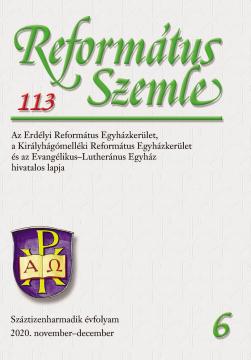
The congregations of the Reformed Church District of Királyhágómellék and Transylvania replaced the older hymnbooks twenty years ago. The replacement of 1921 hymnbook, previously used in the Partium region, and of the 1923 hymnbook used in Transylvania, opened a new chapter in the church singing practice. When comparing the origin and style layer of the songs in the two hymnbooks, the difference is striking, especially with respect to the 19th century melodies and the amount of 18–19th century ad notam songs in the 1921 hymnbook. From a structural point of view, the Hungarian Reformed Hymnbook focuses mostly on the hymns of the Reformation era and the German choral melodies, quantitatively closely followed by the Anglo-Saxon and Romantic hymns. The other valuable medieval, baroque and 20th century hymns are present in a merely symbolic proportion. During a hymnbook revision, it is not enough to drop rarely used or undervalued hymns. Rather, hymns with weakened influence need to be replaced. This is how we should approach our new hymnbook published nearly a quarter of a century ago. Its substantially new material should be regarded as a “profit” that needs to be discovered repeatedly and adopted in our worship services.
More...
In this paper I present an in-depth analysis of the writings of László Ravasz from the period 1903–1906. During this period, he graduated from the Protestant Theological Institute, the State University at Kolozsvár/Cluj, and spent a year of PhD research in Berlin. He started publishing in the journal Erdélyi Protestáns Lap mostly in the domain of religious studies. He still adheres to the liberal wing of theology, but in this period, he slowly starts to shift towards the so-called value theology, a much modern way of the long-standing liberalism.
More...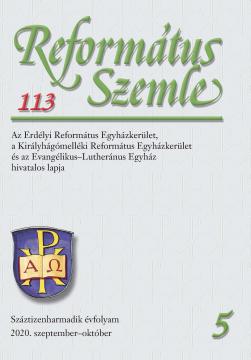
The present study examines from the perspective of dogmatics Eduard Böhl’s book entitled Christologie des Alten Testamentes oder Auslegung der wichtigsten Messianischen Weissagungen published in 1882. The study deals mainly with the introductory chapter. E. Böhl, professor of Reformed Systematic Theology at the Protestant Theological Faculty in Vienna from 1864 to 1899, was strongly influenced by the theological vision of H. F. Kohlbrugge (1803–1875), a Reformed pastor from Elberfeld, Germany. As a systematic theologian he followed the orthodox Reformed position which emphasised the inseparable unity of Scripture. From this hermeneutic stance he defended the Christology of the Old Testament. Böhl testified that God in Christ, in fact, repeated, confirmed, and accomplished on a higher level what had happened in the lives of Old Testament confessors. Old Testament writings legitimize Jesus’ coming, incarnation, salvation, suffering, death, and resurrection. The essence of Böhl’s standpoint is that some of the messianic texts do not refer directly to Christ, but above all to “types”, figures who carry the promise of salvation. Other parts, however, such as the psalms discussed in detail in his book, are unequivocal pieces of evidence of the promises of the Messiah who is embodied in Jesus Christ. In support of his view, he cited “the exegesis of the New Testament,” the apostles and evangelists, and the Targums, the Book of Enoch, and the Talmud among the Jewish religious literature. With his theological vision and writings, through his Hungarian disciples, Böhl exerted a decisive influence on the Reformed theological thinking and the New Orthodoxy in Hungary. This theological trend took up the fight against the spread of theological liberalism with its centre in Debrecen during the second half of the nineteenth century. Böhl, as a defender of traditional Calvinism, was a sure point of reference with respect to important theological issues.
More...
Eduard Böhl (1836–1903), a scholar of the second half of the nineteenth century, was professor of dogmatics at the Protestant Theological Faculty in Vienna for 35 years. His lifework was his “Dogmatics”, which he wrote for 23 years. In this unfairly forgotten work, he formulates cardinal Reformed beliefs providing the reader with accurate guidance regarding theology, anthropology, soterology, and eschatology. This study analyses Böhl’s teaching based on the last major chapter of his book, concerned with the “End of Times”. In order to gain a better understanding of the theological issues discussed by Böhl, this work parallels Gábor Szeremlei’s chapter on “Eschatology” which can be found in his book of Dogmatics entitled “Christian Religious Science”. A study of this issue provides insights into what theologians of the nineteenth century formulated in relation to this question, and how biblical approaches and ideas emerged within the debates of orthodox and liberal theology.
More...
Jelen dolgozat Jézus feltámadásának hagyományozását vizsgálja, mégpedig úgy, hogy először a feltámadás teológiai gondolatának a bibliai és kultúrtörténeti hátterét térképezi fel, majd a Jézus feltámadására vonatkozó újszövetségi bizonyságtételek mögötti hagyományokat igyekszik kitapintani, hogy majd az utolsó fejezetekben megkísérelje felvázolni a beazonosított tradícióelemek hagyományozási folyamatát az ősevangéliumtól a kanonikus evangéliumok feltámadástörténetéig.
More...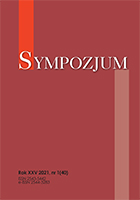

The Christian East is extremely diverse. Some Churches of the Christian East have developed extensive iconographic art along with the theory of this art, while others have not. The Church of Constantinople developed patterns in the field of iconography, including Marian iconography. Byzantine Marian icons can be divided into four groups: (1) Marian feasts; (2) theological icons; (3) symbolic icons; (4) liturgical icons. A characteristic feature of theological icons is the focus on the close relationship between Mary and Christ (God). These icons include the types: Kyriotissa, Hodegetria, Eleusa, Platytera. These are the most important basic icons of Mary discussed in the article.
More...

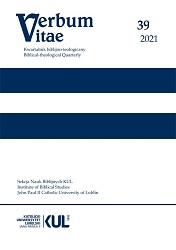
The article analyzes the moral aspects of homosexuality in light of the post-conciliar (Vaticanum Secundum) teaching of the Catholic Church. Reflection consists of two main parts. The first part refers to the fundamental theses of biblical anthropology as the foundation of Catholic sexual ethics. The theology of creation presented in the Book of Genesis is the basis for Christians to adequately understand the problems related to homosexuality. It is joined by a rational reflection analyzing the nature of the human person, which is the source of rights and obligations expressed in natural law. Following this path, the second part of the article focuses on the moral evaluation of homosexuality and formulates the implications of this evaluation for the ecclesiastic community and society. In light of the biblical message and the teaching of the Church, the phenomenon of homosexuality presents as a realization of human sexuality contrary to the wisdom and love of the Creator. In moral judgment, however, it is important to distinguish between homosexual inclination and actions. While respecting the dignity of each person, the Church emphasizes that no inclination directly determines one’s moral choices. For this reason, the Magisterium encourages people with homosexual inclinations to take the path of God’s will in spiritual friendship with Christ in the community of faith.
More...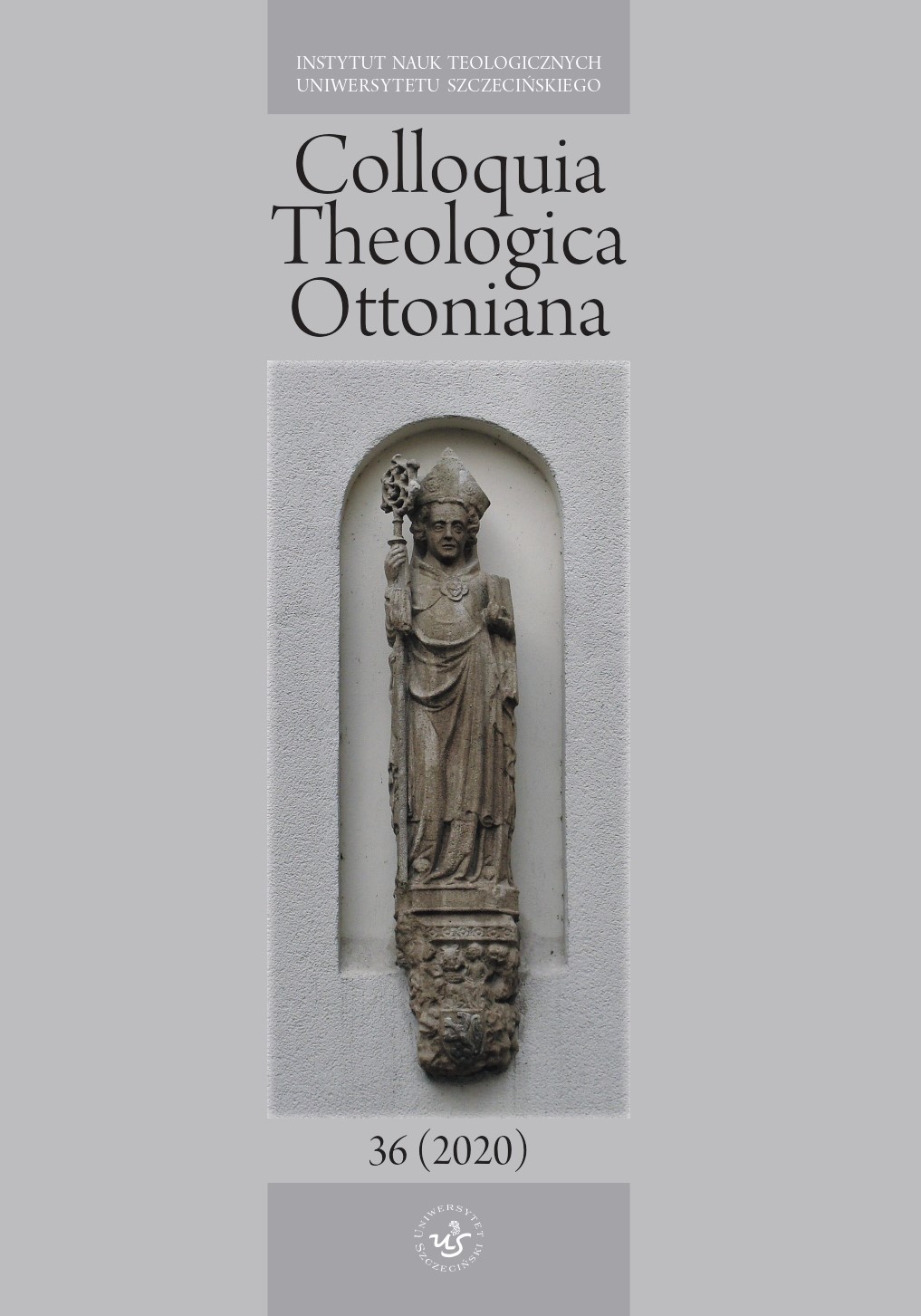
The publication of the post-synodal Apostolic Exhortation Amoris laetitia in the spring of 2016 met with a response in the Diocese of Płock. The main purpose of the article is to describe how the papal guidelines were implemented in the diocese regarding non-sacramental relationships and marriages. The text briefly presents the history of the pastoral care of non-sacramental marriages in Mazovia and then discusses the contemporary forms of accompanying people in irregular situations in light of the paradigm of Pope Francis, expressed in the verbs: accept – accompany – discern – integrate. In the Diocese of Płock, this was expressed not only in the establishment of a new Department for Families in the diocesan curia and the creation of new pastoral structures for non-sacramental marriages, which the pope called “irregular” situations or relationships but also in theological and pastoral reflection undertaken among pastors and laypeople. This issue was developed in a special way in the document Vademecum of Pastoral Care of People Living in Irregular Unions in the Diocese of Płock from 2018, prepared by those responsible for the pastoral care of families and signed by the bishop of Płock. The document was an attempt to implement the teaching of the pope in the conditions of the Church of Płock. The Diocese of Płock is the only diocese in Poland to date to undertake the task of a practical, pastoral confrontation of the indications of the Amoris laetitia exhortation in the pastoral reality. The Vademecum text contains numerous specific answers to the questions of how people living in various types of irregular relationships can participate in the life of the parish and what forms of participation in the community of the Church are unavailable to them for various reasons.
More...
In the lines below are, in translation, three Greek texts with an important dogmatic contribution. The translation is accompanied by an introductory study. The study aims to examine, to specify the foundations of the heresy of Apollinaris of Laodicea (ca. 310-392) and to fill this gap in the study of his doctrine. The whole Apollinarian system is based on the Greek notion of ἐνανθρώπησις, misinterpreted in the Greek way of thinking. For common thought, and therefore for Apollinaris, two perfect beings cannot be united, that is, the perfect God cannot form a single reality with a complete man. St. Gregory the Theologian will oppose to this heresy the soteriological argument, stated thus: "τὸ γὰρ ἀπρόσληπτον, ἀθεράπευτον" ("for that which is not assumed is not healed"). At the same time, this study examines the exchanges between the new Christian culture - freshly born - and the dominant philosophical thinking.
More...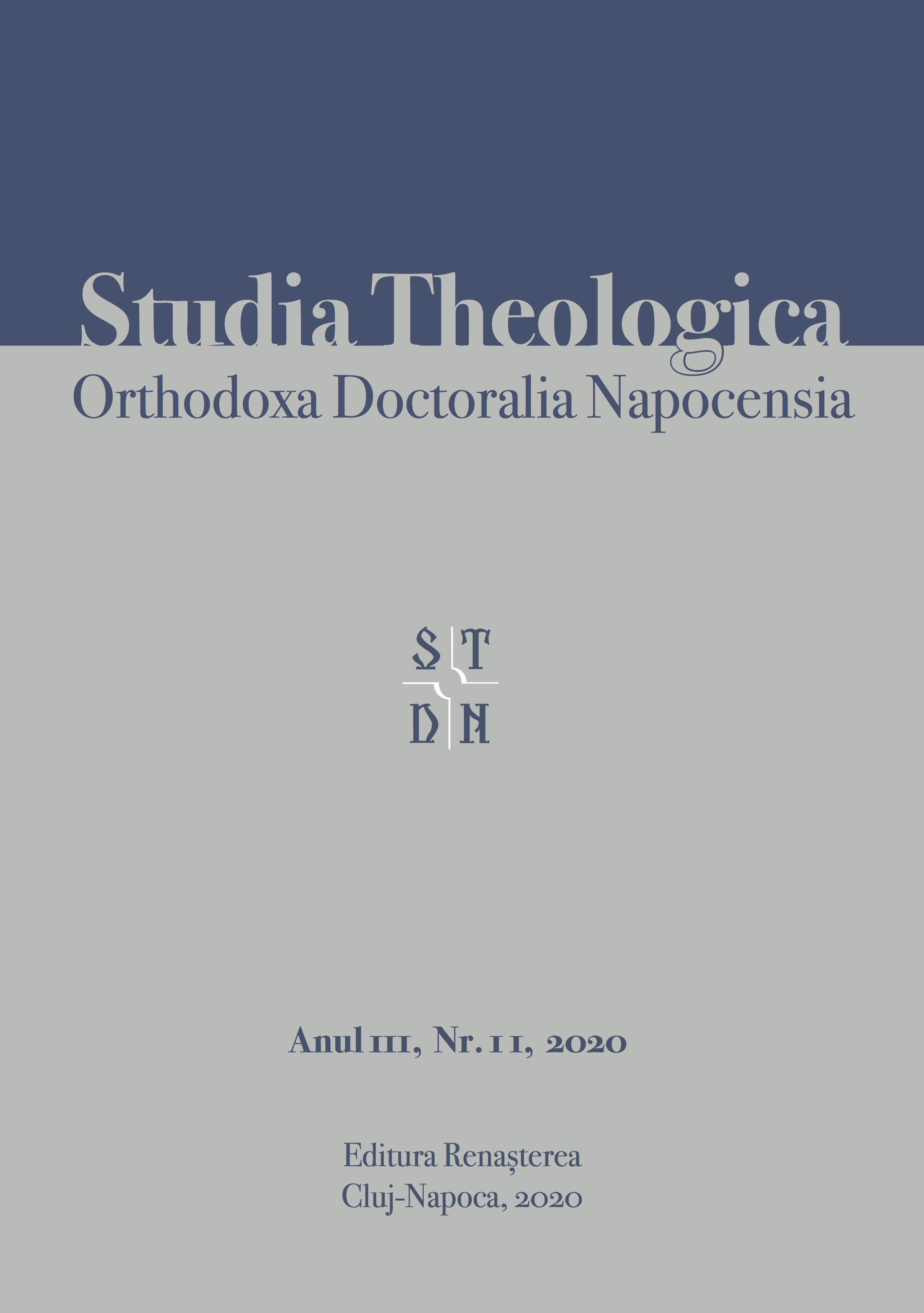
This paper is an introduction to the problem of the relationship between the creation of man in Genesis 1-3 and the scientific perspective of the evolution of the human species. Therefore, we aimed to identify the main research questions and the objectives arising from them. As main questions we have: Did death exist before the fall of man? How did the fall affect the entire creation? How does the biblical account of human creation reconcile with the information about the multitude of hominid species provided by paleontology? At what point in history did Adam and Eve appear and what species were they part of? When exactly did they become in the image and likeness of God? Consistent with these questions, we will have as objectives: the state of the world before the fall of Adam; the creation and fall of man; the origin of death and evil in creation. Another section of this paper deals with the way in which Orthodox theologians approached the problem of the creation-evolution relationship and the solutions they proposed.
More...
The history of Judaism teaches us that one faces a crisis best by devoting himself, even in the very heat of the crisis, to the permanent and enduring values of Judaism and mankind. For the very nature of a crisis is impermanence, transcience, an interruption in the normal development of mankind. The term Judaism, which implies a definable belief-system, has no real equivalent in the traditional vocabulary of the religion itself. Its widespread use in European languages owes largely to the encounter with Christianity, which attaches greater importance to creeds and doctrines. In Jewish tradition, theology and religious concepts rarely have been perceived as defining features. It is more accurate to employ the term Judaism in a broader cultural sense to denote the fulf range of religious expressions of the people of Israel. This usage correctly underscores the national character of the religion, ineftrica bly bound to historical experience, Without attaching disproportionate weight to its theological component. As we shall observe, Judaism contains a complex variety of elements, including law, ethics, morality, observances, worship, and beliefs. Technically, the word Judaism Iike its cognate terms Jew and Jewish—refers to a more narrowly defined time frame within the longer national history, commencing at the conclusion of the biblical era. Whereas earlier epochs had known of twelve tribes of Israel, or of the two rival monarchies of Judah and Israel, a sequente of conquests and exiles brought about a situation in which only a vestige of the original people , dominate by the anciend tribe of Judah and inhabiting its ancestral territory (Judea), was able to maintain its religious and cultural identity through subsquerit generations. In some recent scholarship and theological writing it has become common to restrict the use of Judaism to those manifestations that emerged after the Babylonian exile, as distrinct from earlier Israelite or Hebrew religion. We must take care not to construe this terminological preference as an assertion that the Judaism of the Second Temple was a new and original invention , unconnected to the religion of the Hebrew scriptures.
More...
Philanthropy is a form of communion between people, aid for those in need, compassion for others and it represents a man’s gift to another man. The Church is the most suitable environment for expressing Christian philanthropy because here we realise the communion and the unity of each person, together with God. In terms of philanthropy, every century had its own way of realisation. Our century has also many methods towards a philanthropic action and one of them is the digital space, the most used environment from our daily life. Therefore, how to sustain philanthropy and solidarity in an era of connection and technology? Perhaps social networks and the digital space could be the suitable answer to this question, because they manage somehow to put together people from around the world. This article aims to demonstrate, by analysing some studies and examples, the fact that the internet could be a good way of spreading, not only the idea of philanthropy, but also the main actions that could be done, in this sense.
More...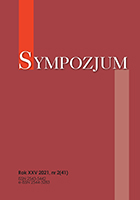
Report from the scientific symposium In the service of life and love, Krakow, October 28th, 2021
More...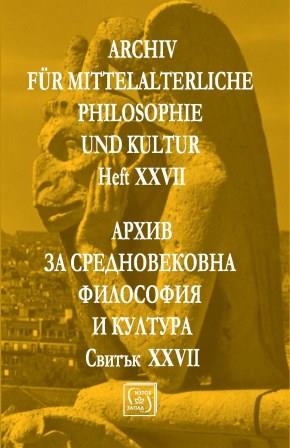
The paper explains the theories of will and freedom throughout the intellectual history of Byzantium. In this context, decisive differences with the Latin tradition are also commented on. The problem network encompasses topics such as decision-making, providence, fate, and predestination.
More...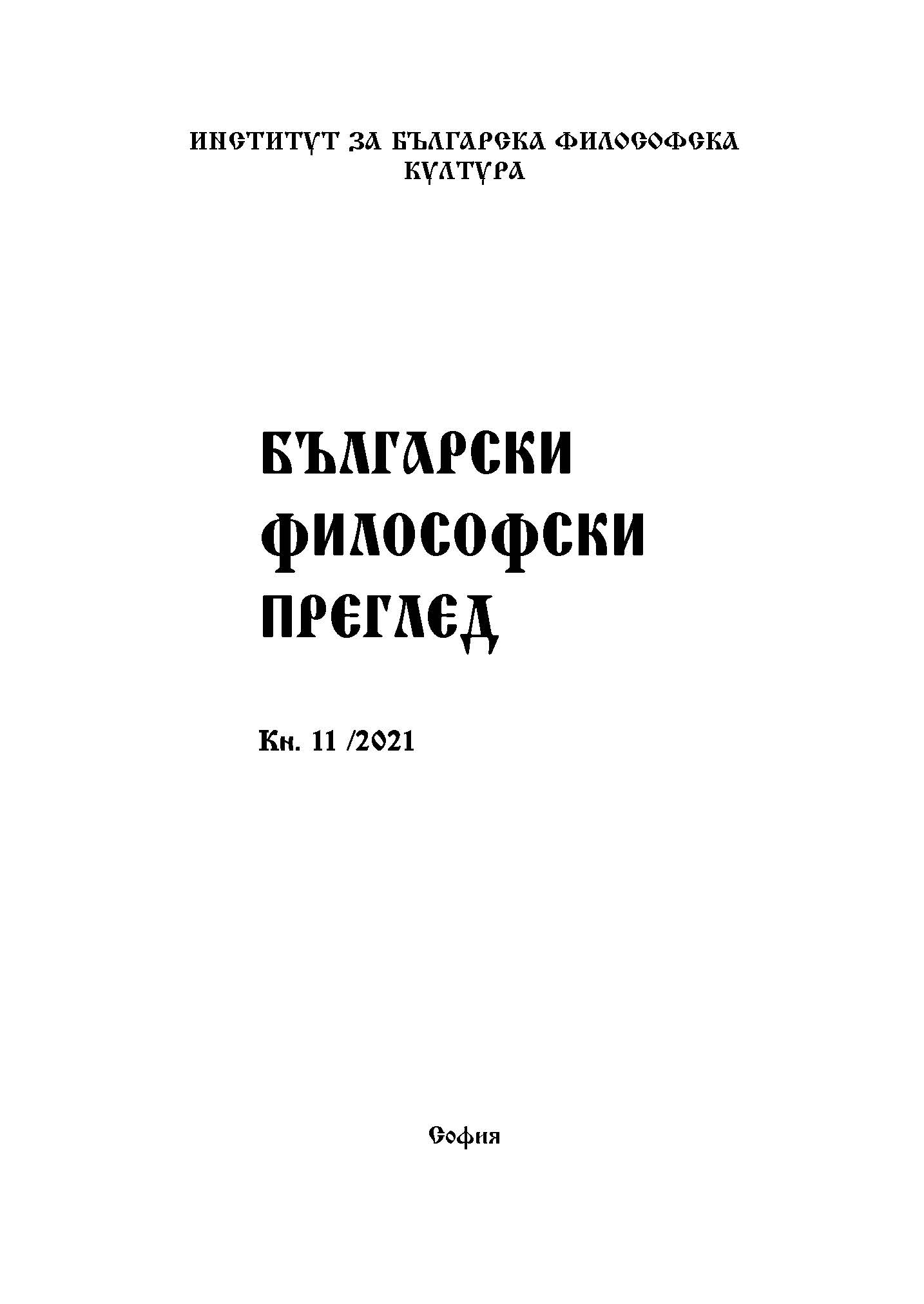
The text begins with the statement that the dispute over Plato’s so-called “Unwritten doctrines” (agrapha dogmata), that ruled the minds and determined the fashion in Platonic studies during the second half of the last century, gradually lost its vehemence. The followers of H.-J. Krämer and K. Geiser on the one hand and H. Cherniss and G. Vlastos on the other seem to be satisfied with the results of the discussions and have agreed to a reasonable compromise, acceptable to both sides. The points of “reconciliation” rest on the following agreements: Plato was not only the author of the dialogues but also the tutor in the Academy. These two roles required different strategies of communication based on the advantages and disadvantages of verbal and written discourse. “Plato’s esoteric philosophy” does not mean some secret doctrine but is used in its literal meaning as inner-school teachings. The Platonic philosophy taught to selected students in the Academy was not different from the one in the dialogues but was taught differently by explicit arguments that are otherwise concealed in the written works or revealed through analogies and allegories. The propensities towards dogmatization of one or another model of the universe are neutralized by the dialogical form and by dialogicity as an existential mode of human being. Therefore, the complete interpretation of Plato's views should be based on both direct and indirect sources where the contents of the dialogues should serve as a corrective against possible over-interpretations, and the evidence about the verbal teaching ensures the completion of the great Athenian's intellectual construction. The text also has another minor goal – to respond to the systematic and prolonged attacks, especially on the Internet platforms against the “Tubingen thesis” whose advocate in Bulgaria is the author.
More...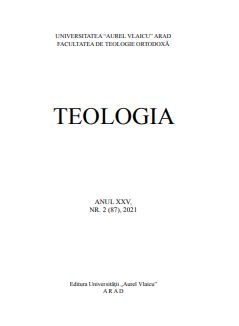
It is during the Restauration (1814-1830) that catechisms available before the Revolution are first republished. However, from 1822, bishops start preparing and publishing on their own new diocesan catechisms structured in three parts: the Creed or the truth on the salvation, morality or what must be done to be saved (the works of salvation) and the sacraments or means that are offered for our salvation. The publishing of these tripartite catechisms will spread in the francophone Catholic era during the second half of the 19th century and continue over the first half of the 20th century. This structure shows that catechism is involved in the mutation of the ecclesial issues of the 19th century. Now the ecclesial priority of catechism is children’s education by instruction with a view to making the people of the future, able to profess their faith in an increasingly dechristianized society, a society whose generation is departing and most of it perish. In fact, dechristianization will laminate like a thin blade the Christian substratum of the industrial cities and urban areas during the second part of the XIXth century, period of development of the industrial society. In this context of growing dechristianization of the cities, the quest of the world salvation imposed taking care of the children’s salvation first, given the fact that these children, preparing for their first Communion, will be the adults of tomorrow. The Catechism of the Council of Trent aimed at transforming the “Christian ignorant in faith-related things” into a “faithful”. Within the tripartite catechisms, this concern for the unity of the human action through knowledge is apparently no longer the priority; the main issue is to educate children in order to live as good Christians, which means professing their faith and showing it by assuming the duties it imposes, with a view to salvation, perceived in the perspective of the afterlife. From then on, the catechism has been perceived and implemented as children’s education, with a view to preparing the adult Christian.
More...